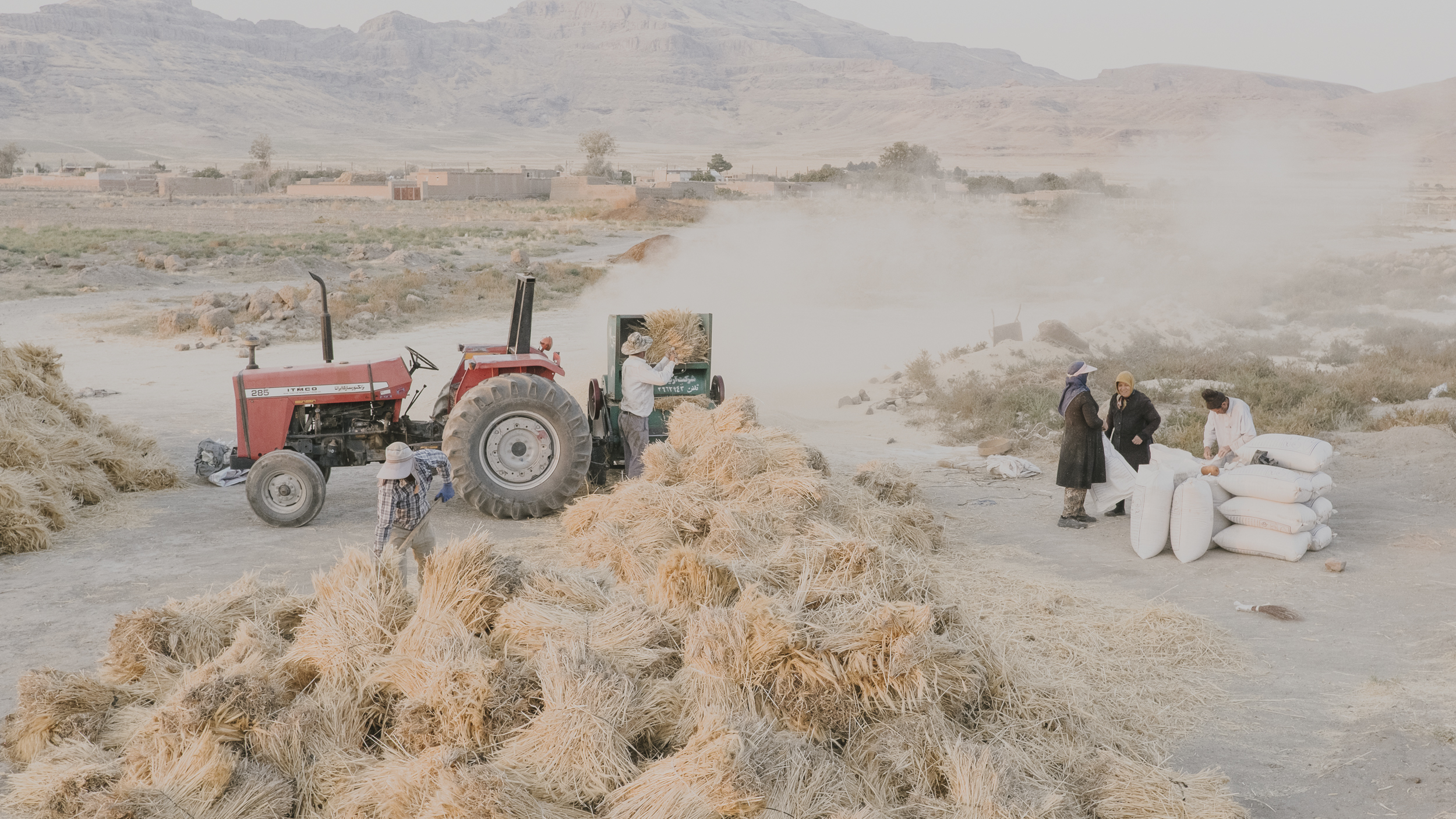Iran's Lake Urmia was once the second-largest saltwater lake in the world, covering more than 2,000 square miles at its deepest in the 1990s.

A boat sits idle.
In the past two decades, the lake has dried out, shrinking at times to less than 20% of its average size. It's not a story of climate change, though that certainly contributed. It's a case of water mismanagement.

The area pictured used to be covered by water. Now salt covers the dry ground.
Scientists call it a "contemporary environmental catastrophe" and a "tragic wake-up call" to rethink how the resource is managed in water-scarce countries.

Tourists from nearby cities like Urmia and Tabriz often visit the lake on weekends for a swim. Mann says this is his favorite photo of the group: "You can see the people trying to enjoy it there," but also see the water disappearing.
Researchers blame water overuse and inefficiency in agriculture, new dams and irrigation projects, a bridge cutting across the lake, declining rainfall and rising temperatures for much of the drying out.

Men gather after work at a traditional teahouse. Alcohol is banned in Iran, so men often socialize at teahouses rather than bars.
"For me this is a really important topic: the environmental problems in the world," says photographer Maximilian Mann, who traveled to Iran three times to document the bare land once obscured under saltwater.

The region is known for apple production, Mann says, with apples exported to Iraq and Turkey.
"I was really surprised about the size of the lake and how fast the lake is dying," he says. "It was really a shock for me to see it. When I was there the first time, I can remember: I went to a hill and I saw only desert."

Mann met this family in a village close to the lake. Akram lives with her son and two daughters. She prepares the evening meal, a soup called aush or ash. Her son, 31-year-old Rahim, is a shepherd and says he prefers the quiet of the village to the traffic of big cities.
Mann's collection of photos from around Lake Urmia shows not only the desiccation of the lake, but the lives and livelihoods of the people who depend on it.

A traditional Turkish hammam, or bathhouse, in Urmia. People use the bathhouses not only for relaxing, but also as a meeting place, Mann says. But traditional hammams are dying out. In the foreground, an employee massages a guest's leg. Mann says: "And it really hurts. I also did it and it's not so relaxing. They are really strong."
An estimated 5 million people live in Lake Urmia's basin, which is situated in far northwestern Iran, near the borders with Turkey and Iraq. The people Mann met in the region primarily spoke Azeri Turkish rather than Persian, Iran's official language.

Boys play soccer near the village of Jabal Kandi in their free time on a Friday. Many young people leave the villages once they reach adulthood.
Mann, who lives in Germany, traveled to Iran first in September 2018, then in November and again in January this year. His photos are collected from all three trips.

Left: Mahnaz Eslami is head of a nongovernmental organization, or NGO, that aims to help women in the region find jobs outside agriculture. It focuses on environmental education and provides financial support. Right: Hoyat Nour is from the village of Galgachi. People moved away from villages as the lake dried. Nour says he couldn't find work in Galgachi and now works as a taxi driver in Urmia.
"I think trust is really important," he says. He built up trust with people in the photos over time, sometimes meeting the same people multiple times.

Beygum and her husband own a field by the lake near Gepqchaq. They grow watermelons and chiles, among other crops. Salt blown from the lake makes the ground saltier each year, she told Mann, making plants more difficult to grow.
"I made really nice friends there," Mann says. He has no immediate plans to return to Iran, but says he would like to see the people he met again someday.

Between 10 and 15 years ago, there was water in this area. Today people package straw, which is grown in the surrounding area.
In his experience, Mann says, it was easier to find men who were willing to be photographed because many of the women in rural areas near Lake Urmia "are more conservative than in cities and don't like being photographed by men."

The water used to be much closer to this village, called Gurchin Qaleh. The two hills in the background used to be mostly surrounded by water.
Lake researchers and advocates say there have been encouraging signs in the past few years. After a visit in February 2017, representatives from the United Nations said three factors were contributing to Lake Urmia's resurgence: engineering to unblock and desilt feeder rivers, the release of water from dams in surrounding hills, and efforts to encourage farmers to use new, water-saving methods.

A tourist from Tabriz takes a selfie while her husband swims. Mann wanted this photo to show that "to make pictures is also to keep memories."
This past spring, massive flooding in Iran helped the lake regain water level as well. Mann's photos were taken before that flooding.
"The floods certainly helped and increased the water levels," says Amir AghaKouchak, a professor of civil and environmental engineering at the University of California, Irvine who has studied the lake. "However, one or a series of floods won't have a long-term impact. The main issue in the basin is that the water demand is much higher than the renewable water in the basin. ... If the water demand in the basin is not managed, after a while the lake will continue to dry out."
Maximilian Mann is a documentary photographer based in Dortmund, Germany. He is on Instagram @maximilian_mann.
9(MDA4NjUyNDQ3MDEzMjMyODAxMTA3N2QwYw004))




